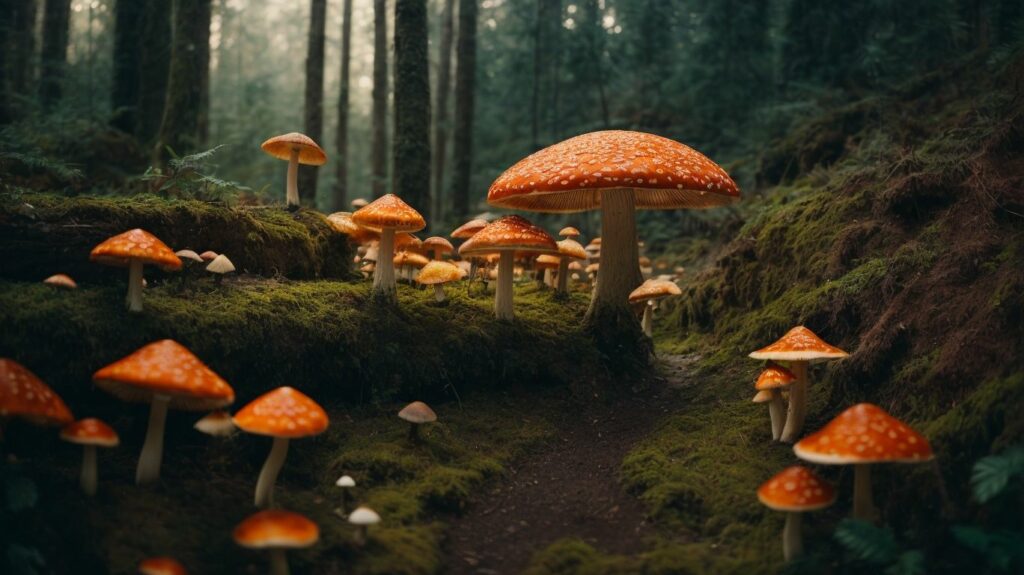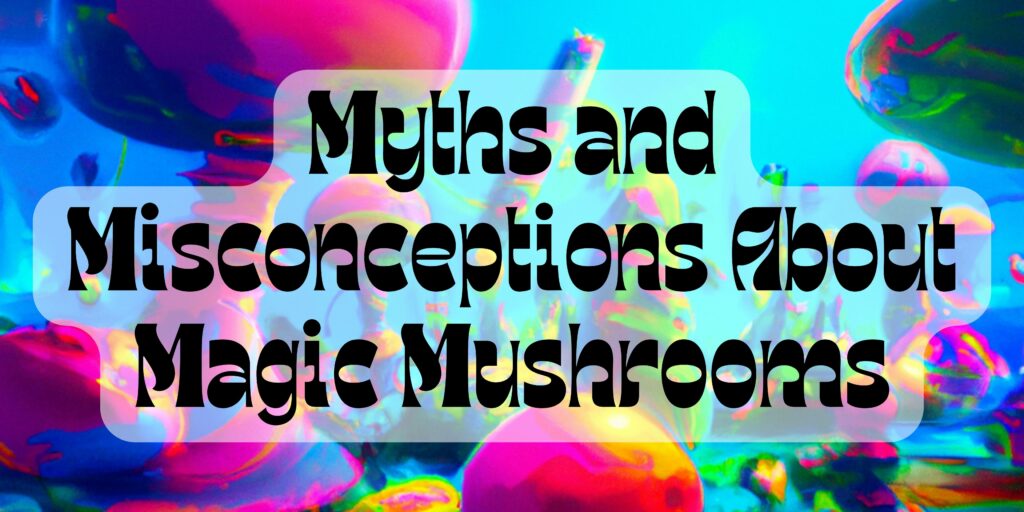Are you curious about the effects of shrooms on your body and mind? Have you heard conflicting information about their safety? It’s important to have a clear understanding of the potential risks and benefits before consuming shrooms. Let’s dive into this complex topic and unravel the truth behind the controversy surrounding shrooms.
What Are Shrooms?
Shrooms, also known as magic mushrooms, are a type of fungi that contain the hallucinogen psilocybin. They are typically dried and consumed for their psychedelic effects. Shrooms can cause visual and auditory hallucinations, changes in perception, and altered states of consciousness. The effects vary depending on the dosage and individual tolerance. It is important to note that shrooms should be used with caution as they can have unpredictable effects and may not be suitable for everyone. If you are considering using shrooms, it is recommended to research their effects, risks, and potential interactions with medications.
What Are the Different Types of Shrooms?
When it comes to the use of psychedelics, one of the most commonly discussed substances is mushrooms, or “shrooms”. However, not all mushrooms are created equal and each type can have different effects on the mind and body. In this section, we will explore the different types of shrooms that are commonly used for their psychoactive properties. These include psilocybin mushrooms, amanita muscaria, and liberty caps, each with their own unique characteristics and potential benefits or risks.
1. Psilocybin Mushrooms
Psilocybin mushrooms, also known as “magic mushrooms,” are a type of fungi that contain the psychoactive compound psilocybin. It is crucial to be well-informed and take precautions for a safe experience when consuming psilocybin mushrooms. Here are some steps to consider when using them:
- Research: Educate yourself on the different strains and effects of psilocybin mushrooms.
- Source: Obtain mushrooms from a reliable and trusted source to ensure their quality and authenticity.
- Dosage: Begin with a low dose and gradually increase if needed to understand your tolerance and avoid overwhelming effects.
- Set and Setting: Create a comfortable and safe environment, free from any potential stressors or disturbances.
- Intention: Set clear intentions for your experience and maintain a positive mindset.
- Support: Have a trusted and experienced trip sitter present to provide guidance and support during the journey.
- Integration: After the experience, take time for reflection and integration of any insights gained.
- Safe Consumption: Consume mushrooms on an empty stomach to enhance absorption and reduce potential nausea.
- Hydration: Stay hydrated throughout the experience by drinking water or herbal tea.
- Follow-up: Seek professional help if you experience any persisting negative effects or psychological distress.
These shrooms may make you feel like you’re in a fairy tale, but beware of the wicked witch’s curse.
2. Amanita Muscaria
Amanita Muscaria, commonly known as the fly agaric, is a type of mushroom that belongs to the Amanita genus. It is easily recognizable by its distinctive red cap with white spots. This mushroom contains various psychoactive compounds, including muscimol and ibotenic acid, which can induce hallucinations and altered states of consciousness. However, it is important to keep in mind that Amanita Muscaria is highly toxic and can be fatal if ingested in large quantities. Due to its unpredictable effects and potential for harm, it is not recommended for recreational use.
Fact: Amanita Muscaria holds a significant place in cultural and religious traditions, especially in Northern European folklore.
These caps may give you the liberty to explore your mind, but watch out for the trip back to reality.
3. Liberty Caps
Liberty caps are a type of psychedelic mushroom that contains the psychoactive compound psilocybin. Here are some key points about liberty caps:
- Scientific name: Psilocybe semilanceata
- Appearance: Small, cone-shaped mushrooms with a pointed cap and a distinct nipple-like structure.
- Geographical distribution: Common in Europe and North America, particularly in grasslands and meadows.
- Psychoactive effects: Liberty caps can induce hallucinations, altered perception of time, and changes in mood and cognition.
- Dosage and caution: Due to their potency, it is crucial to start with a low dose and be aware of the potential risks and legal implications.
True story: A friend of mine once tried liberty caps during a camping trip and had a transformative experience connecting with nature and gaining a new perspective on life.
No, but they do make for a fun game of hide and seek with the law.
Are Shrooms Legal?
Magic mushrooms, also known as shrooms, are classified as a Schedule I drug in the United States, making them illegal. However, the legal status of shrooms varies from country to country. For example, in Brazil, Jamaica, Portugal, and the Netherlands, the use of magic mushrooms is decriminalized or tolerated under certain conditions. It’s essential to research and understand the laws and regulations regarding shrooms in your specific location before considering their use. Always prioritize your safety and comply with the laws and regulations of your jurisdiction.
What Are the Effects of Shrooms?
Shrooms, also known as psilocybin mushrooms, have been used for centuries for their hallucinogenic properties. However, the use of shrooms has also raised concerns about their potential negative effects on the mind and body. In this section, we will explore the various effects of shrooms, both in the short-term and long-term. By understanding the potential consequences of consuming shrooms, we can make informed decisions about their use and recognize any warning signs of adverse effects.
1. Short-term Effects
Short-term effects of shrooms can vary from person to person, but common experiences include sensory distortion, euphoria, and altered perception of time and space. To use shrooms safely, follow these steps:
- Research and educate yourself about the short-term effects and risks of shrooms.
- Start with a low dose to gauge your sensitivity and reaction.
- Use shrooms in a comfortable and familiar setting with trusted individuals.
- Stay hydrated and avoid mixing shrooms with other substances.
- Prepare for the experience by having a trip sitter present.
- Have a calm and positive mindset before consuming shrooms.
- Allow yourself time for recovery and reflection after the experience.
- Seek professional help if you experience any negative effects or need support.
- Remember that shrooms are not suitable for everyone and should be used responsibly.
Remember, shrooms may be a fun trip, but long-term use may leave you feeling like a mushroom – a little slow and not quite as sharp as before.
2. Long-term Effects
Long-term effects of shroom use can vary depending on factors like dosage, frequency, and individual susceptibility. Here are some potential long-term effects to consider:
- Persistent Psychiatric Symptoms: Some users may experience lasting psychological effects like flashbacks, anxiety, or psychosis.
- HPPD: Hallucinogen Persisting Perception Disorder can cause ongoing visual disturbances and is one of the long-term effects to be aware of.
- Increased Risk of Mental Health Disorders: Long-term use may contribute to the development or worsening of mental health conditions like depression or schizophrenia.
- Changes in Brain Function: Studies suggest that chronic shroom use may impact brain structure and function, potentially affecting memory, cognition, and emotional processing.
- Impaired Social and Occupational Functioning: Long-term shroom use can interfere with relationships, work, and overall functioning, making it important to consider the potential long-term effects.
It’s essential to understand the potential risks and consider them when making decisions about shroom use.
Are Shrooms Addictive?
Magic mushrooms, or “shrooms,” are not typically considered addictive in the traditional sense. Unlike drugs such as opioids or alcohol, they do not create a physical dependency. However, for some individuals who enjoy the mind-altering effects, they can be psychologically addictive. The pleasurable experience of taking shrooms may lead to a desire to repeat the experience. It is important to keep in mind that the effects of shrooms can vary greatly depending on the individual and the dosage. It is always advised to exercise caution and follow safety guidelines when using any psychedelic substance.
Can Shrooms Be Used for Medical Purposes?
Yes, shrooms can have medical benefits. Studies have shown that certain types of psychedelic mushrooms, like psilocybin mushrooms, may hold potential in treating mental health issues such as depression, anxiety, and PTSD. Clinical trials have demonstrated positive outcomes in reducing symptoms and enhancing overall well-being. However, it is crucial to understand that the use of shrooms for medical purposes should only be done under the supervision of healthcare professionals in controlled environments. Self-medication or recreational use can result in negative consequences and should be avoided.
What Are the Risks of Using Shrooms?
While shrooms, or psilocybin mushrooms, have been used for therapeutic and spiritual purposes for centuries, they also come with potential risks. In this section, we will discuss the various risks associated with using shrooms. From the possibility of experiencing a bad trip to accidental poisoning, it is important to understand the potential dangers before consuming shrooms. Additionally, we will explore how shrooms may interact with other drugs and the potential consequences of these interactions.
1. Bad Trips
Experiencing a bad trip while using shrooms can be distressing, but there are steps you can take to minimize the risk:
- Set and Setting: Choose a comfortable and familiar environment. Surround yourself with trusted individuals who can provide support.
- Start with a Low Dose: Begin with a small amount to gauge your sensitivity and response to the substance.
- Prepare Mentally: Maintain a positive mindset and be aware of your intentions and expectations.
- Stay Hydrated: Drink water to keep yourself hydrated throughout the experience.
- Have a Sober Trip Sitter: Designate a sober individual who can assist and guide you during the trip.
- Practice Mindfulness: Engage in calming activities such as deep breathing, meditation, or listening to soothing music to help manage anxiety or negative emotions.
Here’s a true story: A friend of mine once had a bad trip while using shrooms. By having a supportive environment and employing these safety measures, they were able to navigate the challenging experience and come out with valuable insights and personal growth.
2. Accidental Poisoning
Accidental poisoning is a potential risk associated with the use of mushrooms. To minimize this risk, follow these steps:
- Identification: Properly identify the mushrooms you plan to consume.
- Knowledge: Educate yourself on the toxicity levels and potential dangers of the specific mushroom species.
- Source: Only obtain mushrooms from reputable and reliable sources, whether foraged or purchased.
- Poisoning symptoms: Familiarize yourself with the symptoms of mushroom poisoning.
- Medical attention: Seek immediate medical attention if you suspect accidental poisoning.
Remember, precaution is essential when consuming mushrooms. If in doubt, it is better to err on the side of caution and avoid consuming them.
3. Interactions with Other Drugs
Interactions with other drugs can be dangerous when combined with shroom use. To ensure safety, follow these steps:
- Consult a healthcare provider: Discuss any medications or substances you are currently taking to understand potential risks.
- Avoid mixing substances: Shrooms should not be combined with other drugs, including alcohol and antidepressants, as they can lead to unpredictable reactions.
- Research drug interactions: Educate yourself about potential interactions between shrooms and any medications you take regularly.
- Start with a low dose: If you decide to consume shrooms, begin with a small amount to gauge your body’s response.
- Be aware of side effects: Monitor yourself for any adverse reactions or unexpected symptoms while using shrooms.
It’s important to remember that everyone’s body chemistry is different, and drug interactions can vary. Always prioritize your health and seek professional advice when in doubt.
True story: A friend of mine combined shrooms with antidepressant medication without consulting a healthcare provider. This led to severe serotonin syndrome, resulting in hospitalization. This incident highlights the importance of understanding drug interactions and seeking medical guidance before using shrooms.
Shroom use can be harmful, but not as harmful as listening to your ex’s voicemail after a bottle of wine.
How Can Shroom Use Be Harmful?
While shrooms have been used for centuries in various cultures for medicinal and spiritual purposes, their recreational use has raised concerns about potential harm. In this section, we will explore the ways in which shrooms can be harmful to both the body and mind. From physiological effects to psychological risks, we will examine the potential downsides of using shrooms as a recreational drug. By understanding these potential harms, we can make informed decisions about the use of shrooms and prioritize our safety and well-being.
1. Physiological Harm
The use of shrooms can potentially cause physiological harm if not consumed responsibly. To minimize this risk, it is important to follow these steps:
- Research and education: Educate yourself about the potential physiological effects of shrooms in order to make an informed decision.
- Start low and go slow: Begin with a low dose to assess your tolerance and sensitivity to the substance.
- Environment: Create a safe and comfortable setting to reduce the chances of accidents or injuries.
- Stay hydrated: Drink plenty of water to prevent dehydration, as shrooms can cause an increased heart rate and perspiration.
- Avoid combining with other substances: Mixing shrooms with alcohol or other drugs can increase the risk of adverse physiological effects.
Fun Fact: Psilocybin, the active compound in shrooms, has shown promising results in treating mental health conditions such as depression and anxiety.
Be careful with shrooms, the psychological harm might make you rethink your life choices – or at least think you can fly.
2. Psychological Harm
- Psychological harm from shroom use can manifest in various ways.
- 1. Bad trips: Users may experience intense fear, paranoia, and anxiety during a trip, leading to psychological distress.
- 2. Flashbacks: Some individuals may experience recurrent hallucinations or disturbing thoughts long after using shrooms.
- 3. Mental health issues: People with underlying mental health conditions may be at risk of exacerbating symptoms or triggering new disorders.
John, a college student, consumed shrooms at a party and had a terrifying experience. He became convinced that he was trapped in a never-ending loop and experienced severe anxiety. Following this episode, he developed symptoms of depression and needed professional help to recover from the psychological harm caused by his shroom use.
How to Use Shrooms Safely?
When using shrooms, it’s important to prioritize safety to minimize potential risks and ensure a positive experience. Here are some steps to use shrooms safely:
- Research: Educate yourself about shrooms, their effects, and potential risks.
- Set and Setting: Choose a comfortable and familiar environment to consume shrooms, with trusted and supportive individuals.
- Dosage: Start with a low dose to gauge your sensitivity and gradually increase if desired.
- Stay Hydrated: Drink plenty of water while using shrooms to prevent dehydration.
- Know Your Limits: Listen to your body and be mindful of your emotional state.
- Integration: After the experience, take time to reflect and integrate any insights gained.
Frequently Asked Questions
Are shrooms bad for you?
It depends on the individual and how they use them. While some people may have positive experiences with shrooms, others may have negative reactions. It’s important to do thorough research and consult with a medical professional before using shrooms.
Can shrooms be addictive?
Shrooms are not considered physically addictive, but they can be psychologically addictive for some individuals. It’s important to use shrooms in moderation and be aware of any potential addictive behaviors.
What are the potential risks of using shrooms?
Some potential risks of using shrooms include adverse psychological reactions, increased heart rate and blood pressure, and potential interactions with other medications. It’s important to use shrooms responsibly and in a safe environment.
Are there any medical benefits to using shrooms?
While more research is needed, some studies have shown potential medical benefits of shrooms, such as treating depression and anxiety, and aiding in end-of-life care for individuals with terminal illnesses. However, these benefits should only be pursued under the guidance of a medical professional.
How do I know if I’m using shrooms safely?
It’s important to do thorough research and educate yourself on the effects of shrooms before using them. Start with a low dose and use in a safe and comfortable environment. It’s also recommended to have a trusted friend present and to have a plan in case of any adverse reactions.
Can shrooms have long-term effects on mental health?
There is currently limited research on the long-term effects of shroom use on mental health. However, individuals with a history of mental health issues may be more susceptible to negative reactions to shrooms and should use them with caution. It’s important to monitor your mental health after using shrooms and seek help if needed.




